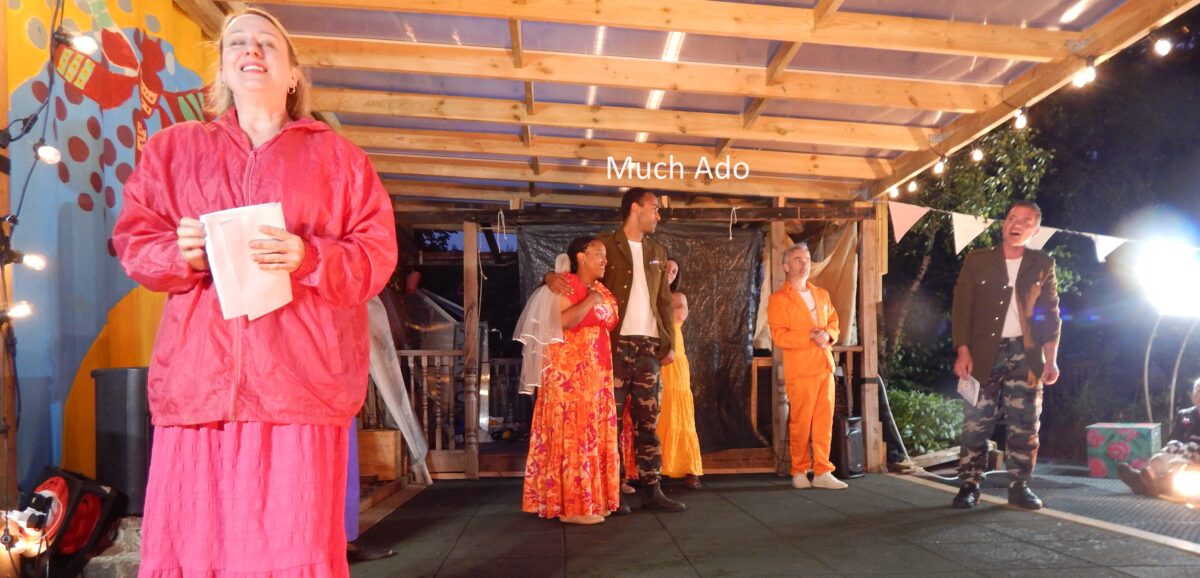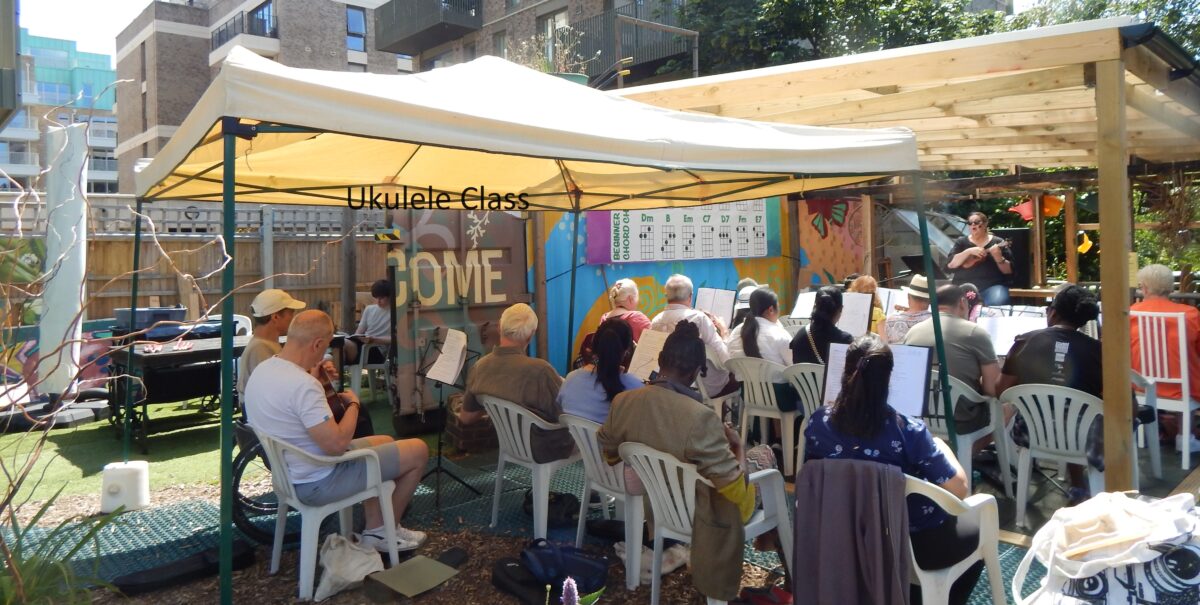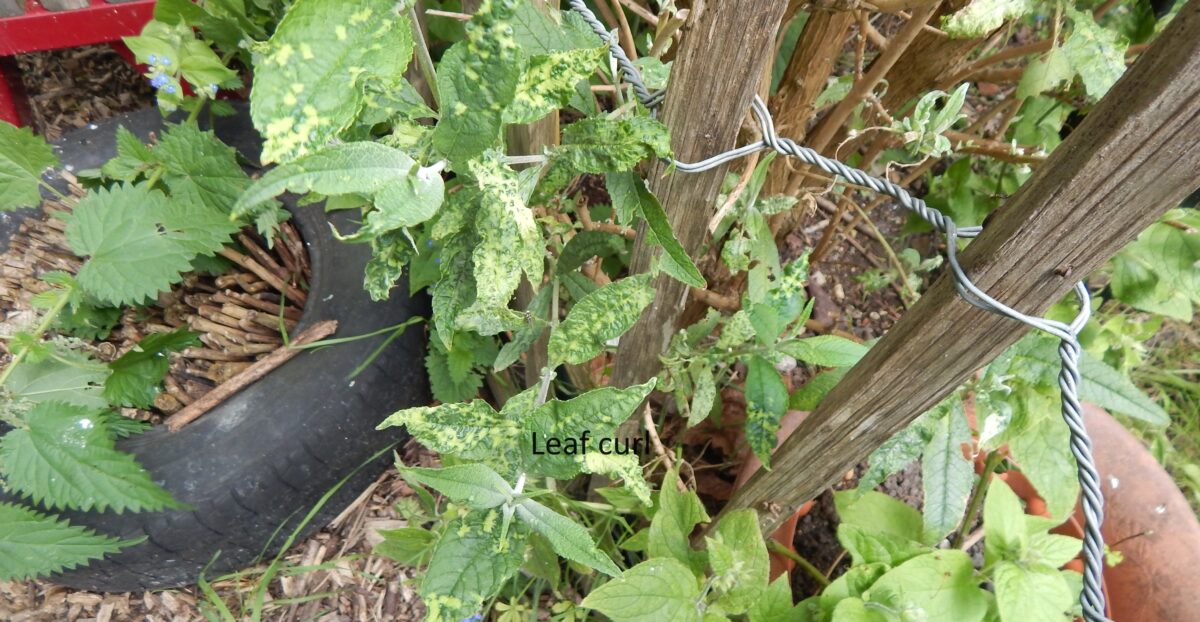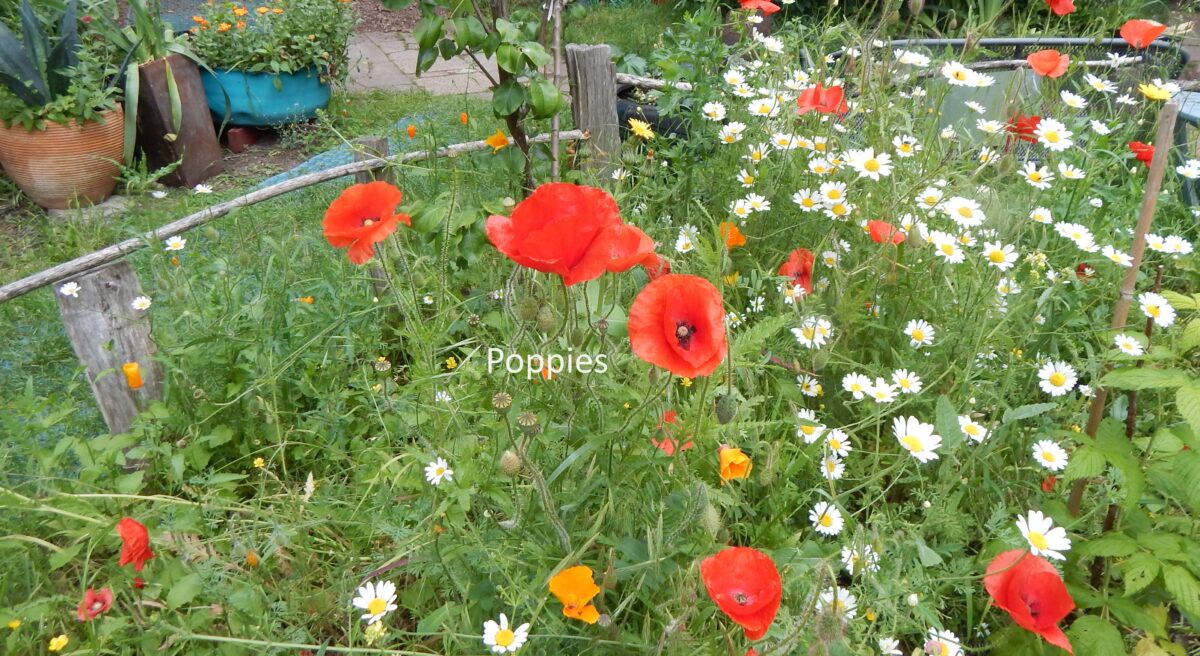The garden is very green (not counting plastic grass). All the rain we have had over spring and summer has increased chlorophyll in the leaves, the green pigment that works with sunlight and water to make glucose, giving plants sustenance to grow, and to make yet more greenery. In a drought, the absence of water kills off chlorophyll, unless there’s regular hosing. Though, there’s nothing to beat a good downpour when it comes to giving the ground a real soaking.
All our fruit is coming on well. I note apples, pears and plums, and under the small pergola bunches of tiny grapes. We have planted out some of the tomato plants that were getting too big for their pots, so we’ll have some in late summer to add to our sandwiches.





